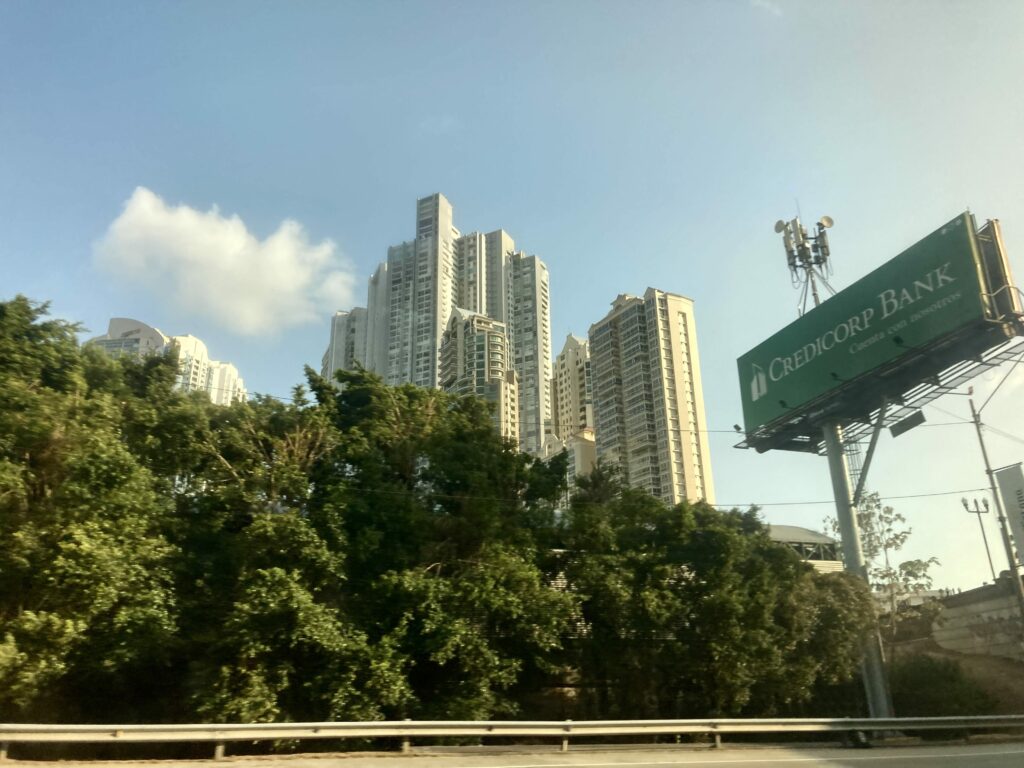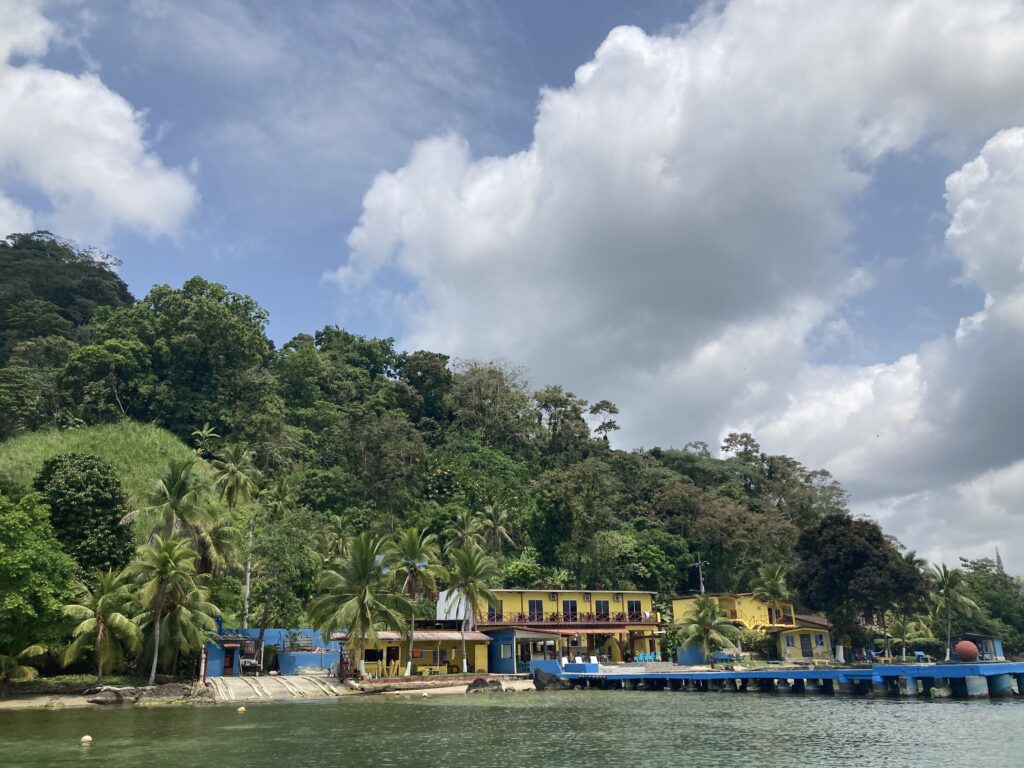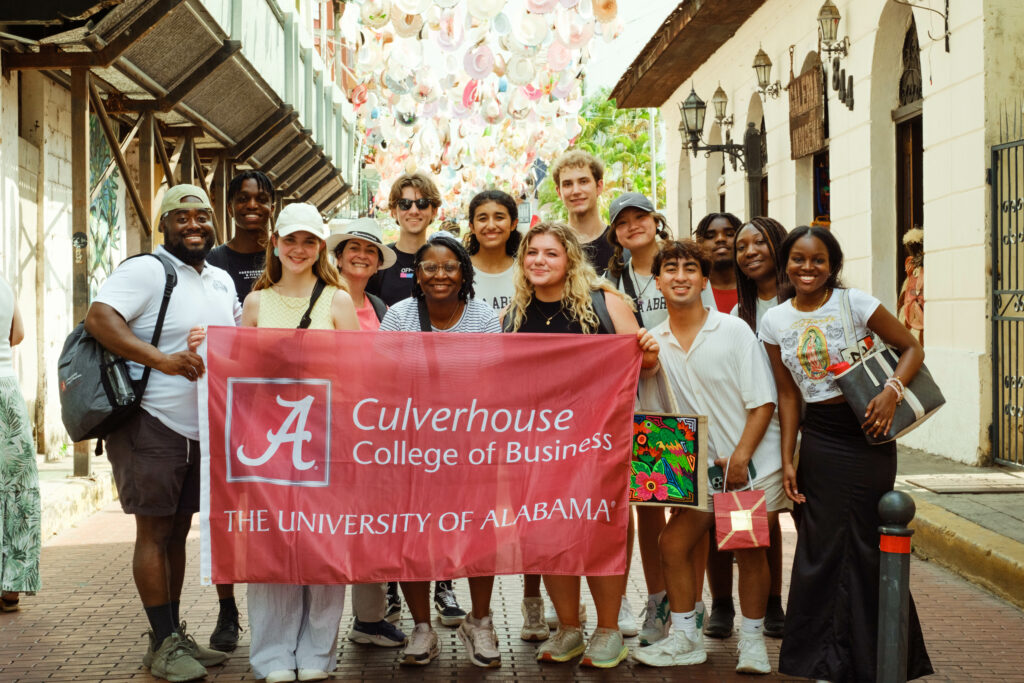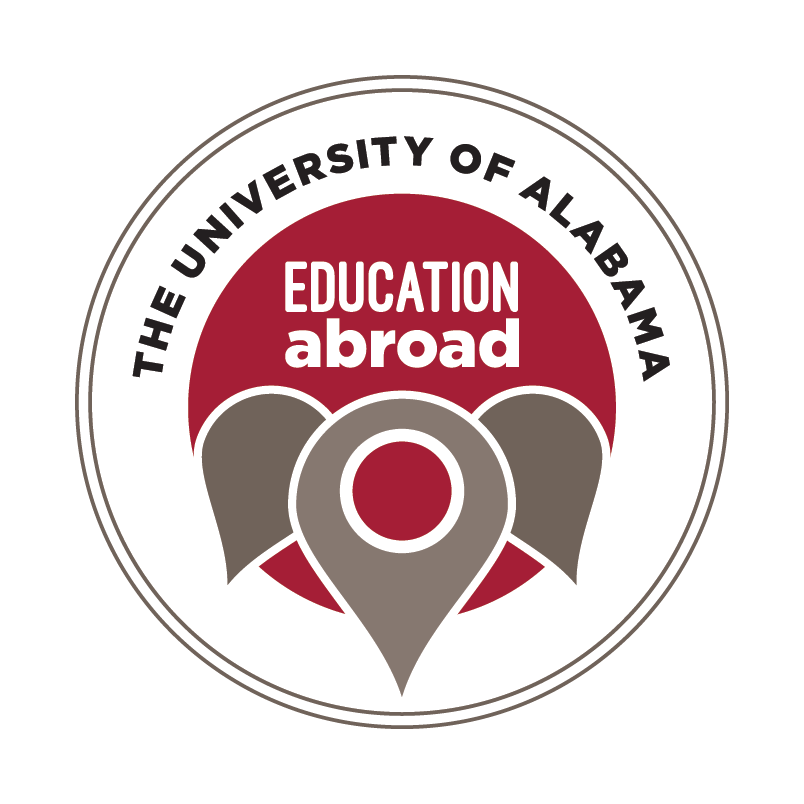Being abroad in Panamá has been a very breathtaking, eye opening, and mind boggling experience. There were too many memorable experiences to write in a single blog post, but I’ll try to touch on some of my personal culture shocks and fascinating experiences from an American perspective. First of all was our drive from Panama City’s airport to Ciudad Del Saber, the campus where we were staying. After flying into Tocumen International Airport, it was around 10 pm and dark outside. As we drove, I could see that there was very little lighting on most streets despite the large number of people walking around. It was quite surprising to see that so many people lived in near complete darkness, and that basic street lighting was something I took for granted. Something else truly shocking was the wealth disparity in the country. One day, we visited Movimiento Nueva Generación, a non profit organization dedicated to assisting children living in low-income and high-crime areas in their development and education. When we visited this facility in the El Chorrillo neighborhood, we were surprised by the appalling conditions of the area. The roads were largely unpaved, many of the homes and buildings were in severe disrepair, and as we later learned, many of the children attending this facility had their only meal of the day there. However, once we left and drove to Casco Viejo, Panamá City’s colonial quarter, a tourist-oriented and wealthy region of the city filled with very upscale hotels, restaurants, and historic architecture, we realized that these two areas of the city were only about a 20 minute walk away from each other. In addition, something very different and unique about Panamá is its climate and environment. My first morning outside, I was instantly hit by the heat and humidity and the myriad of loud bird calls all happening at once. Being located so close to the equator, Panamá has a tropical humid climate that only switches between wet and dry seasons. This allows for the growth of incredibly biodiverse jungles that are host to a huge amount of flora and fauna. Throughout my trip, I saw and heard many unique creatures, including a black iguana, howler monkeys, parrots and many other tropical birds, various tropical fish, massive termite nests, and several Agouti, a species of large rodents native to Central and South American rainforests. Another culture shock I experienced, although somewhat paradoxical, was how similar Panamá felt to the United States. Panama has a dollarized economy so I could use my American dollars to purchase just about anything without having to worry about currency conversion. Also, many of the developed areas where we visited businesses looked and felt very similar to those of America. The Costa Del Este neighborhood, where we visited Pandora’s local headquarters, as well as the Mediterranean Shipping Company’s Panamá office, had a large number of skyscrapers and palm trees that looked very similar to those of Miami Florida. In addition, many American restaurants, place names, cars, and stores were to be found everywhere. This is primarily due to the U.S. influence Panamá experienced from its founding as a country, throughout most of its existence, and after the U.S. invaded in 1989 and oversaw its transition to democracy. I was expecting the country to feel different due to its location and various other cultural influences, so this was something that really surprised me.



